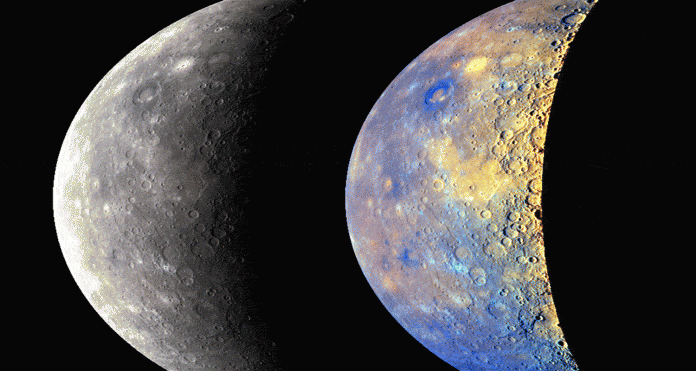Planet Mercury is typically thought of as a hot, sprightly celestial body that orbits the Sun in about 88 days, but it is also known for its strangely dark surface. The authors of a paper published in March 2016 in the journal Nature Geoscience analyzed data collected by NASA’s Messenger probe, a spacecraft that orbited Mercury from 2011 to 2015 before crashing into the planet. They concluded that Mercury’s dark quality was the result of vast deposits of graphite, a form of the chemical element carbon used in pencils, crucibles, batteries, and lubricants here on Earth. (The composite photograph shows a filtered, but otherwise photo-realistic, image of Mercury [left] alongside an enhanced color image [right] that was created to highlight the subtleties of the planet’s surface.)
Where did Mercury’s graphite come from, you ask? The paper’s authors believe it was brought to the planet’s surface from two sources. They found evidence that Mercury’s current crust was the second crust to form. The first crust, they suggested, was made of graphite that floated on top of “magma oceans.” Later, as the magma cooled, the graphite crust was buried by volcanic deposits in some places or was mixed with volcanic deposits in others. Graphite mixing could be one way Mercury’s surface rocks were made darker; however, the authors also discovered that the regions of greatest darkness coincided with the planet’s impact craters. Consequently, they suggested that meteors also played a role by slamming into the planet with enough energy to eject part of the buried graphite crust below, which fell as blast debris and settled on the surface.
Source: http://www.britannica.com/story/mercurys-dark-surface-explained
















